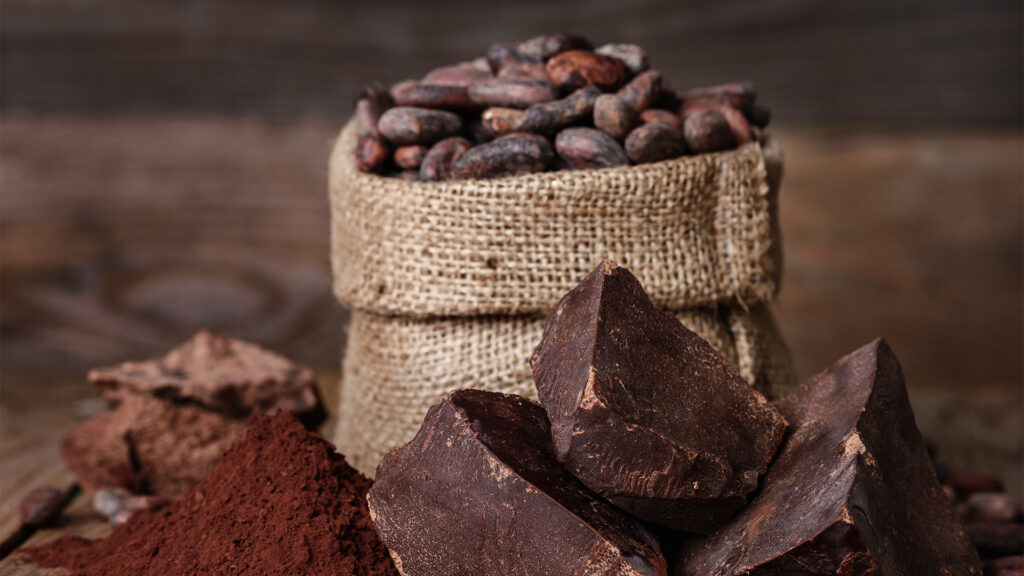Whether you’re a chocolate lover who proudly flaunts their sweet tooth or discreetly savors the occasional chocolate treat, the delectable world of cocoa is under threat.
Be it a snack bar, a sprinkle on your cappuccino, a luscious mousse, or a trio of Easter eggs, chocolate is the world’s most cherished delight. However, this indulgence may become considerably pricier in the coming months, as cocoa bean prices have recently reached a 46-year high on the global market.
Adding to this confectionery conundrum, world sugar prices, often used to temper the bitterness of chocolate in lower-quality products, have soared to 12-year highs, applying further pressure on prices.
Monday witnessed London cocoa futures on the ICE settling at £14 per tonne lower after achieving their highest level in 46 years, driven by signs of an impending supply shortage. ICE futures prices have surged by a staggering 72% over the past year alone.
Traders attribute this surge to reports from the top cocoa producer, Ivory Coast, indicating a decline in production, which pushed prices to touch £3,063 per tonne—the highest level since 1977. They later stabilized at £3,036 per tonne. Ivory Coast has confirmed that it has concluded its cocoa contract sales for the 2023-24 (October-September) season at 1.4 million tonnes, down from 1.7 million tonnes in the previous season.
These developments validate industry reports of a 20% drop in production in the leading cocoa-producing countries during the upcoming October-September period, primarily due to adverse weather conditions. The top four cocoa producers—Ivory Coast, Ghana, Nigeria, and Cameroon—account for just over 50% of global cocoa output.
Swiss company Lindt & Sprüngli, one of the most renowned chocolate producers, has been affected by the surge in raw bean prices, with their stock falling by approximately 10% in the past month (though it rose by 0.4% on Monday). Similarly, shares in the US chocolate producer Hershey’s experienced an uptick on Monday but have declined by 6.6% over the past year, in stark contrast to the S&P 500’s 3% gain during the same period.
Meanwhile, ICE New York sugar prices have surged by over 66% in the past year. London sugar prices also closed higher, with white futures for October increasing by nearly 1% to $733.20 per tonne, remaining $20 below the 12-year high of $753.10 per tonne witnessed last week. The rise in sugar prices is fueled by growing concerns that India, the world’s largest sugar producer, may soon impose restrictions on sugar exports due to a weak monsoon and reduced yields in the upcoming crop. India allowed mills to export only 6.1 million tonnes of sugar during the current season, ending on September 30, a significant decrease from the record 11.1 million tonnes exported in the previous season.
Additionally, India has advanced its deadline for doubling nationwide cane-based ethanol blending in petrol to 2025. This move will increase ethanol production in the country, reducing the quantity of sugar available for export markets.
In New York on the ICE, October raw sugar futures also rose by 0.3% to settle at 26.40 US cents per pound. Alvean, the world’s largest sugar trader, anticipates a global sugar deficit of 5.4 million tonnes for the 2023-24 season, marking the sixth consecutive year of shortages. This prediction is fueled by the looming possibility that India may curb sugar exports and Thai farmers may prioritize more profitable cassava over sugarcane, potentially resulting in reduced sugar output from Thailand, the world’s second-largest sugar exporter.
The surge in sugar prices may offer a modest boost to the Australian sugar crop, which is expected to reach 4.4 million tonnes in the 2023-24 season, up from 4.2 million tonnes in the previous year.

